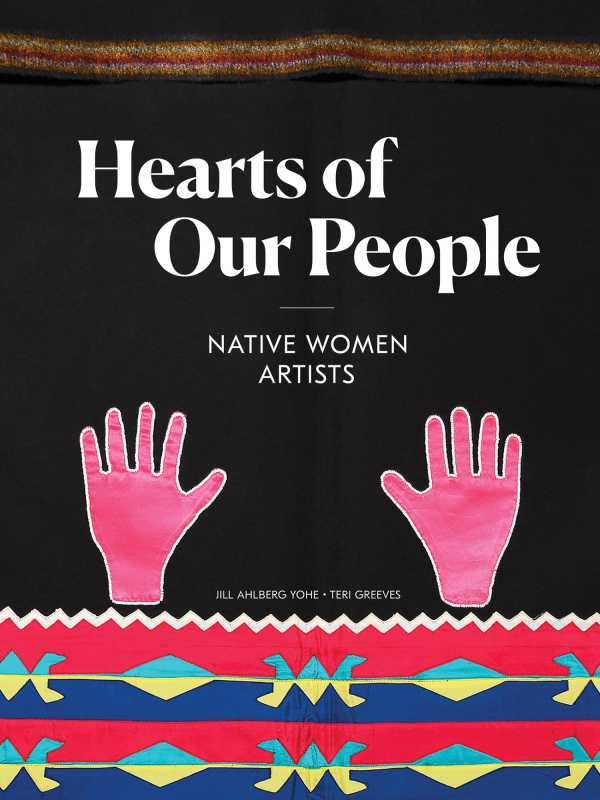Hearts of Our People
Native Women Artists
- 2019 INDIES Winner
- Bronze, Multicultural (Adult Nonfiction)
Hearts of our People catalogs the first major exhibition focused on Native American women’s art. Curated by Jill Ahlberg Yohe and Teri Greeves, and incorporating essays by many Native artists and scholars, this is a landmark achievement in reassessing indigenous women’s artwork in a range of media.
The book constructs a new canon for Native women’s art, elaborating on its particular aesthetics. It describes artistic processes and the resilient evolution of Native artists during colonization and forced relocation. Art history essays and artist interviews uncover multilayered motivations that impel Native women to create, including the need to protect one’s family and heritage, connection with the natural and spiritual worlds, and working through trauma.
Contemporary artists often seek to reclaim cultural power: Witness the opulent jewelry of Keri Ataumbi and Jamie Okuma that honors Pocahontas as a powerful diplomat rather than as a “vapid” Disney princess, or Rose Simpson’s fierce muscle car adorned in Pueblo blackware patterns.
Ahlberg Yohe and Greeves challenge the perception of Native women’s art as purely representative and eliminate its double marginalization as “primitive” or “handicrafts.” They reframe definitions of fine art versus decorative art and explore broad themes, including of legacies, relationships, and power. The result is a more balanced, nuanced vision of what great art really is.
“In Focus” sections examine specific women artists, objects, and artistic traditions. They explore intricate, labor-intensive, and skilled processes of traditional quill art, weaving, beading, pottery, and basketry, as well as more contemporary media including sculptural installations, video, and performance art. Illustrated with historic images and vibrant color photographs of exhibition artwork, the book is as visually stimulating as it is intellectually and culturally important.
As Ahlberg Yohe and Greeves note, this is not a definitive volume of Native women’s art history, but an exciting, giant first step toward its greater appreciation, understanding, and scholarship.
Reviewed by
Rachel Jagareski
Disclosure: This article is not an endorsement, but a review. The publisher of this book provided free copies of the book to have their book reviewed by a professional reviewer. No fee was paid by the publisher for this review. Foreword Reviews only recommends books that we love. Foreword Magazine, Inc. is disclosing this in accordance with the Federal Trade Commission’s 16 CFR, Part 255.

